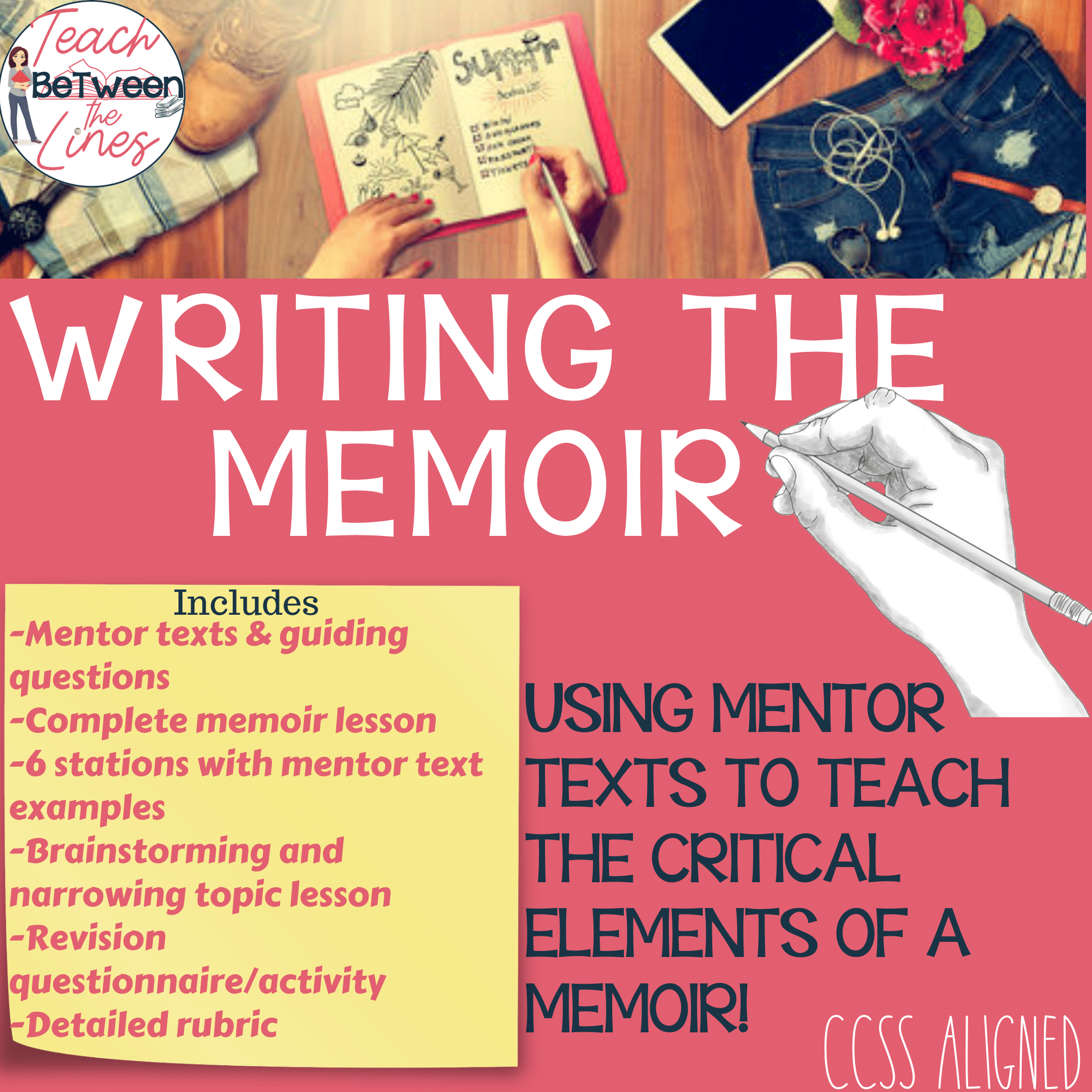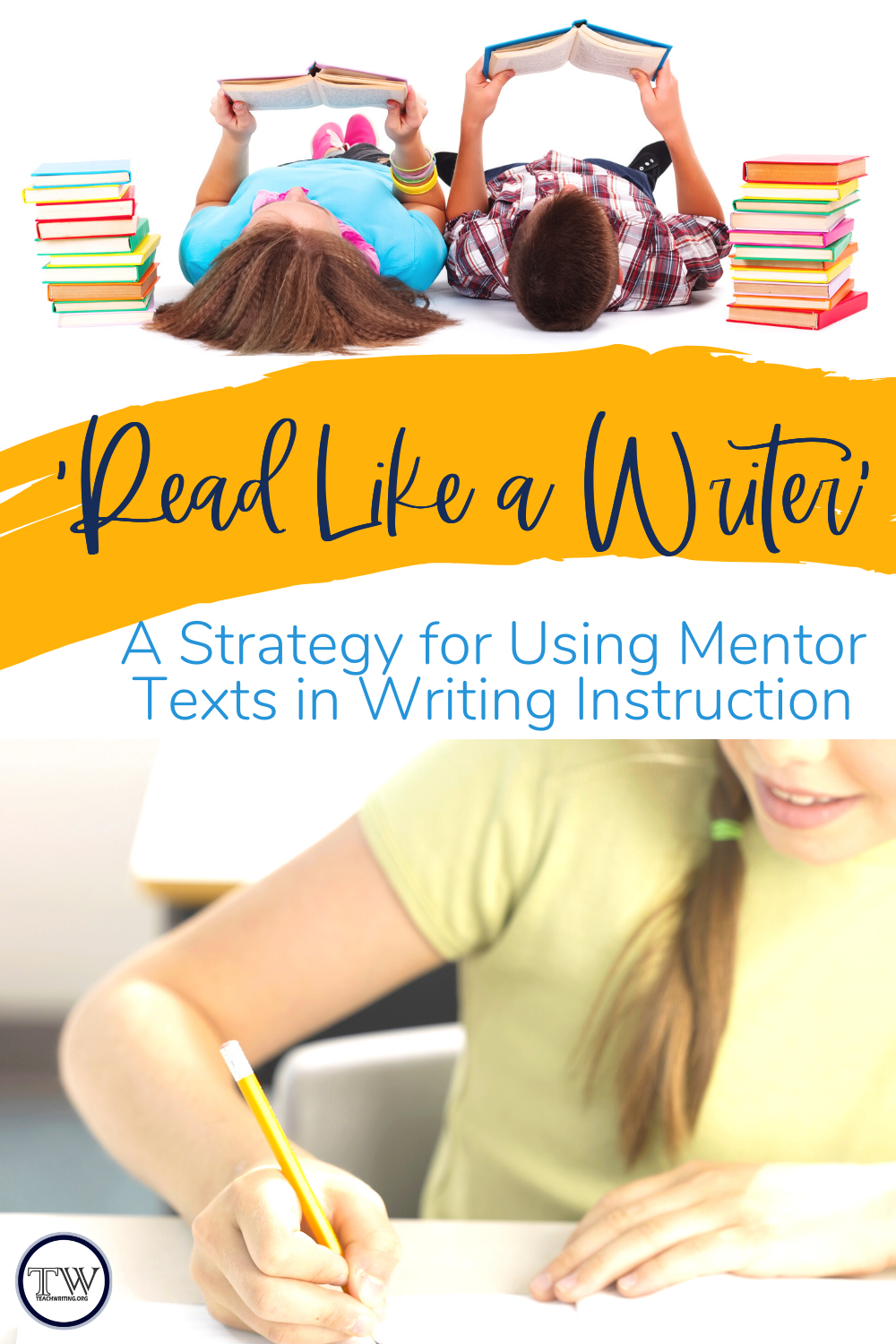Get Your Students to ‘Read Like a Writer.’ A Strategy for Using Mentor Texts in Writing Instruction.
Before I begin any large writing unit, I always get my students reading quality mentor texts. It wasn’t until a few years ago, however, that I introduced the concept of ‘reading like a writer’ to my students. Here is my ‘why’, and the struggle that I experienced that brought me to this new strategy:
I knew I wanted my students to read a mentor text before they began writing, but I found that my students were not making the connections I wished to make when they began to write their own work. They would read this quality excerpt from Maya Angelou’s memoir, for example, but not apply those same strategies to their own writing. I would still get those memoirs that were a basic recall of events, not the engaging story, as modeled in the mentor texts. There was a large disconnect, for a vast majority of my students, between the mentor texts and their own writing. I knew I would need to step up my scaffolding game, so to speak, if I hoped to build a bridge between these mentor texts and their own writing.
This is where the ‘read like a writer’ strategy began.
‘Read Like a Writer’ Mentor Texts with Memoir Writing
The first step in this ‘read like a writer’ process is for students to read and explore the text, as they are used to, from the familiar position of a reader. For my higher-level learners, I use “A Cub Pilot” by Mark Twain, and for my lower-level or middle school learners, I use an excerpt from Maya Angelou’s memoir, “I Know Why the Caged Bird Sings.” I often ask them to close read (we close read almost everything in my classroom), but I really just want them to think about the text as a reader does. I want them to make meaning, understand the character and plot development, and identify the theme. We take some time to discuss this text as a reader together.
Then, I explain that we are going to be reading this text for a second time – this time we will be examining the text as a writer. We will be paying careful attention to the author’s craft. How did they create this memoir? What type of memory did they share? How did they deliver the story to you? What is the organizational pattern? I provide them with a graphic organizer to help them dig deep into the writer’s mind.
For memoir writing, I ask students to explore the very things that I want them to implement within their own writing. I have broken this down into 6 elements. I will assess my students on these 6 elements, so I ask them to identify these within the mentor text.
Critical Elements to Memoir Writing
1. Build Background – how does the author build background for the memory he/she reveals?
2. Organizational Pattern – how does the author use chronological order (with some flashbacks) to tell the story?
3. Showing Language – how does the author use descriptive language to tell the story. How does this piece of nonfiction differ from a news article?
4. How does the author use dialogue to share this memory? How does the use of dialogue impact the readability of the story?
5. Who is the author’s audience? How do they write with the audience in mind? What is the mood you wish to establish?
6. Purpose/Theme. How does the author share their purpose or the theme with the reader?
With guiding questions in each of these categories, students were able to explore each with depth and complexity. Because I am always a fan of including movement and discussion opportunities, I actually turn this into a station activity. Students discuss the guiding questions, re-read passages I selected/highlighted, and analyzed the text for the author’s craft.
This reading like a writer activity transformed their memoirs. I began to receive memoirs that were story like in nature. Engaging pieces of writing that truly embodied these critical skills, while engaging students in the ability to tell their own unique true-life story. When I poll my students at the end of the semester, this is by far their favorite unit!
‘Read Like a Writer’ with the Character Analysis Essay
I use a very similar process with my character analysis essays. Instead of looking at a published author’s work, I use examples from my own students (or craft my own written examples) for the elements I wish my students to model within their writing.
I created my character analysis mentor text stations (as part of my character analysis unit) to get students moving about the classroom and discussing the critical essay elements. I had a station for the introduction – which shared examples of hook statements and thesis statements. I had an inference statement station for identifying and supporting the character trait. Evidence stations to get students selecting the best evidence to support their analysis and review MLA Citations. Conclusion stations and so much more! The process to create these was pretty simple. I just created some directions and offered some guiding questions on the element I knew I was going to assess. Then I found (or created) some examples for students to analyze. A student answer sheet was helpful for those classes that needed accountability.
‘Read Like a Writer’ with the Literary Analysis Essay
I did something a bit different with my literary analysis unit this year, and I loved the outcome. I created an “Assess the Examples” activity. I grabbed three passages from my recent college course (I am working on my Doctorate in Education) and tailored them for my students. You could also just grab student examples from the year prior or create your own, too. I used those three examples to create a well-crafted example, a just-okay example, and a less than perfect example. I shared these with students. With partners, students used the rubric that will assess their own writing, to assess the examples and craft comments explaining the grade. I also asked them to think like a teacher and provide tips on how the ‘student’ can improve the analysis. They had a great time pretending to be a teacher and grade the student work. The discussions were rich, and students were engaged!
‘Read Like a Writer’ with Narrative Writing
I personally love teaching narrative writing. I find that it is the type of writing that my middle/high school students are most familiar with and enjoy the most. Within that same vein of reading like a writer, I ask my students to explore quality mentor texts. My favorite way to do this is with picture books. Here are the two activities I use to help students analyze mentor texts with narrative writing.
I start by selecting a picture book and completing a full class read-aloud. I move the desks and ask students to sit at my feet just like they did in elementary school. I wasn’t sure about this approach at first, but let me tell you, the LOVED IT! I think our secondary students are navigating a difficult place – wanting to be an adult but needing to be a kid. There was something about this activity that brought out that little kid in them. I could see the comfort in their demeanor. They giggled a bit at first, but as I started reading, those giant bodies (I say this because I am very small myself) perked up and eagerly listened to each and every page. They searched the pictures as I held the book open for them to see. Then, as we still sat “on the carpet” so to speak, we were able to talk about the narrative qualities of the story. How did the author create the exposition? What was the inciting event? How did the author create suspense? And, so on.
Then, to expand on this activity, I go back to my trusty stations. I pull several quality picture books and tab the sections I want students to read and explore for its elements. I might have a character development station, a rising action station, a theme station, etc. Then, by looking at examples from engaging and memorable picture books, students can fully analyze the author’s craft with their own looming narrative assignment in mind. Because students are reading an entire picture book at each station, this activity can take a couple of class days, but the engagement with this is so high, that students really do benefit from the longer activity.
An added bonus to these activities is that my students inadvertently became better readers. They began to see our more challenging texts for its narrative elements (just as we hope they will.) We read Lord of the Flies after completing this narrative writing assignment, and students began talking about how the author created the exposition with the plane crash and the characters that he would introduce literally coming out of the water. It was one of those rare teaching moments where students make deep connections between units and you just want to do a celebratory dance right in the middle of the classroom. Yes, I did do this. Yes, they did eye-roll and groan.
Through all of this, I learned that just using mentor texts to introduce writing isn’t enough. They need scaffolded support to examine that text with a writer’s eye. Try some of these ideas in your classroom! I’d love to hear how they go in the comments!
Interested in implementing some of the activities and stations I introduced here?
Check out the resources below!
About the Author
Liz is the founder of Teach BeTween the Lines. She has been teaching for over ten years; she has loved growing young minds through literature and the art of crafting the written word. She is currently working on her doctorate in Education from the University of Minnesota, and holds an M.A. in Education from St. Mary’s University, Minnesota. She loves to write short stories in her free time, especially in those cold Minnesota winters. She is supported by a wonderful family made better by the addition of her two beautiful children.








